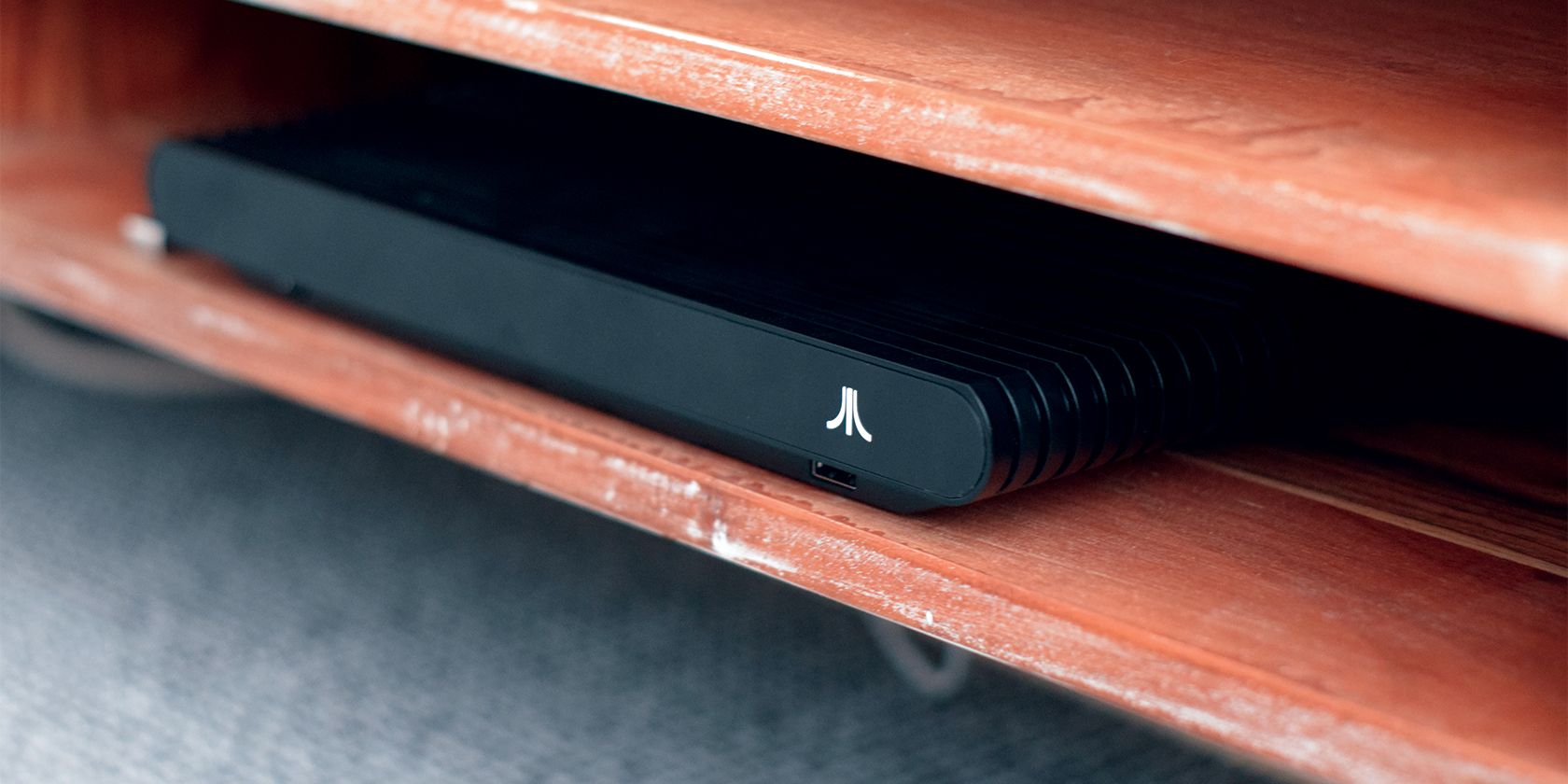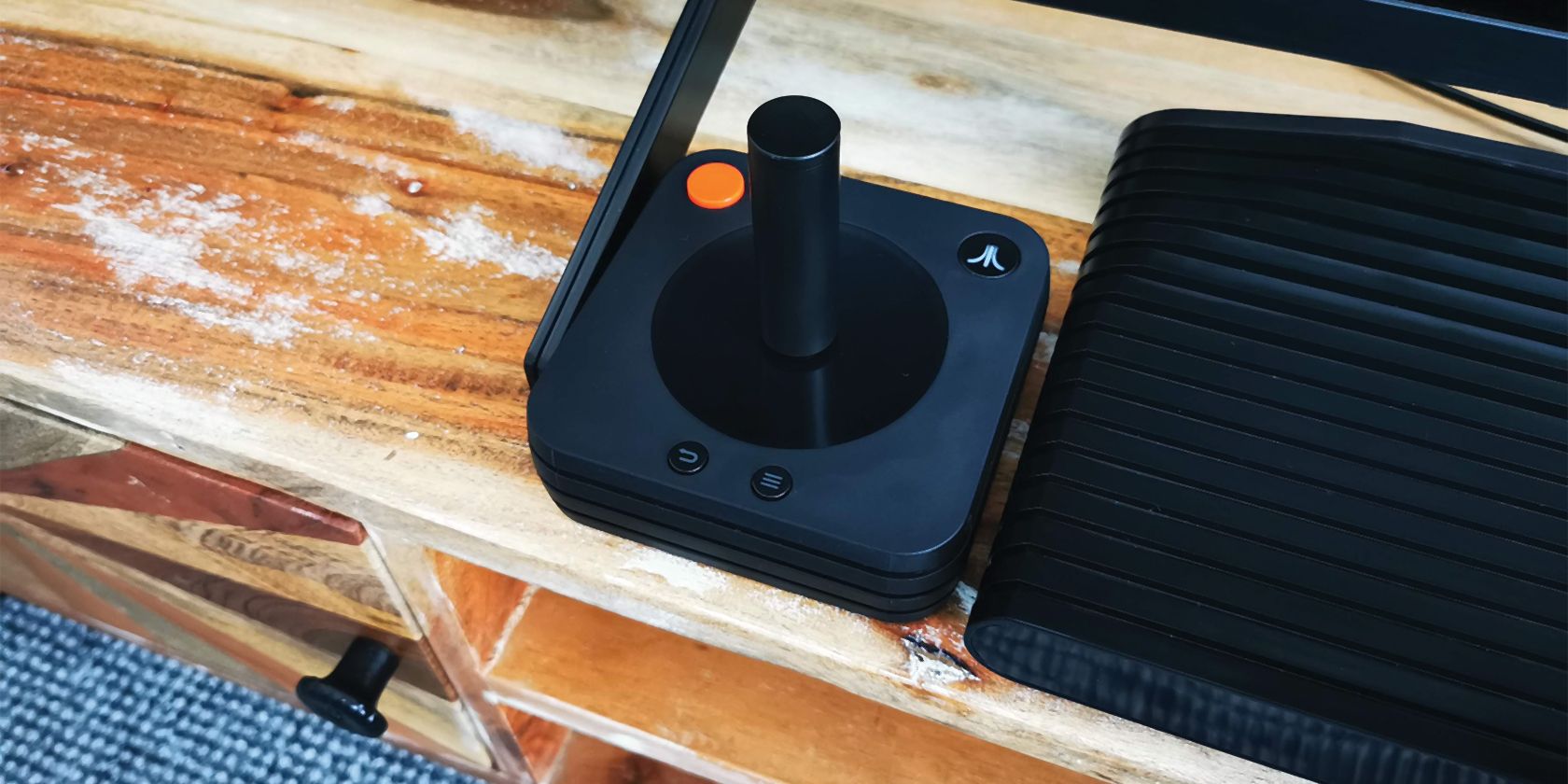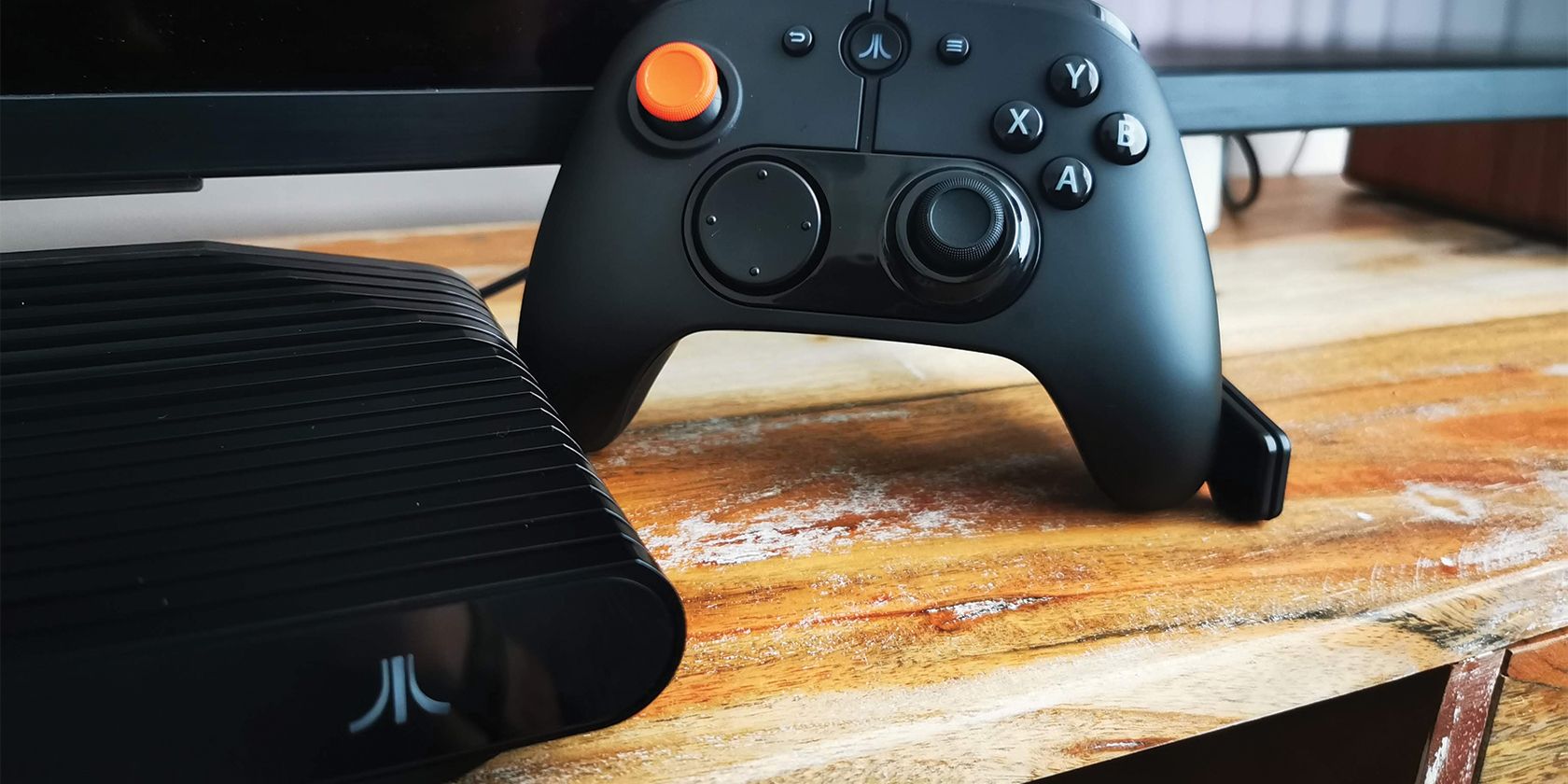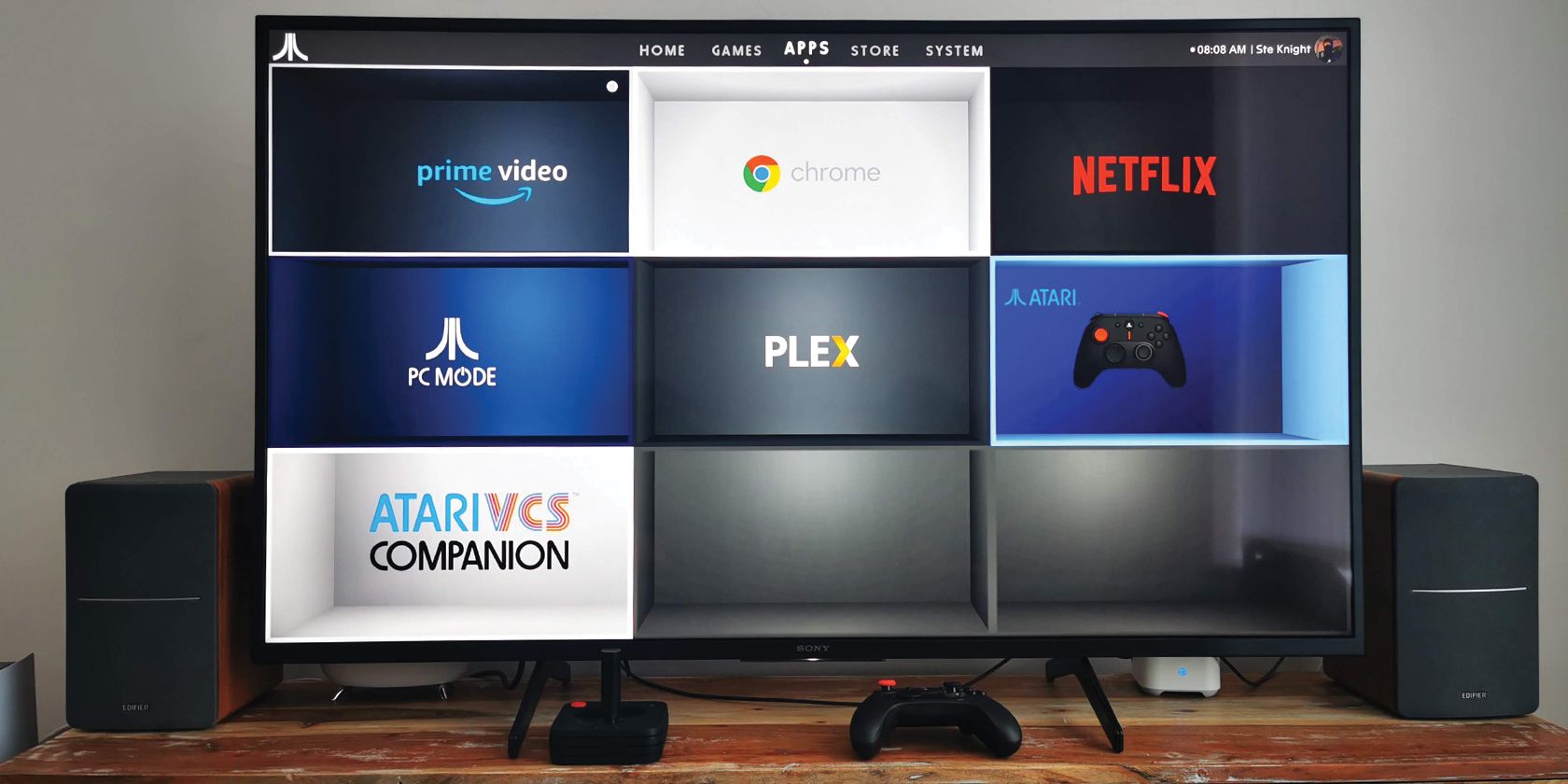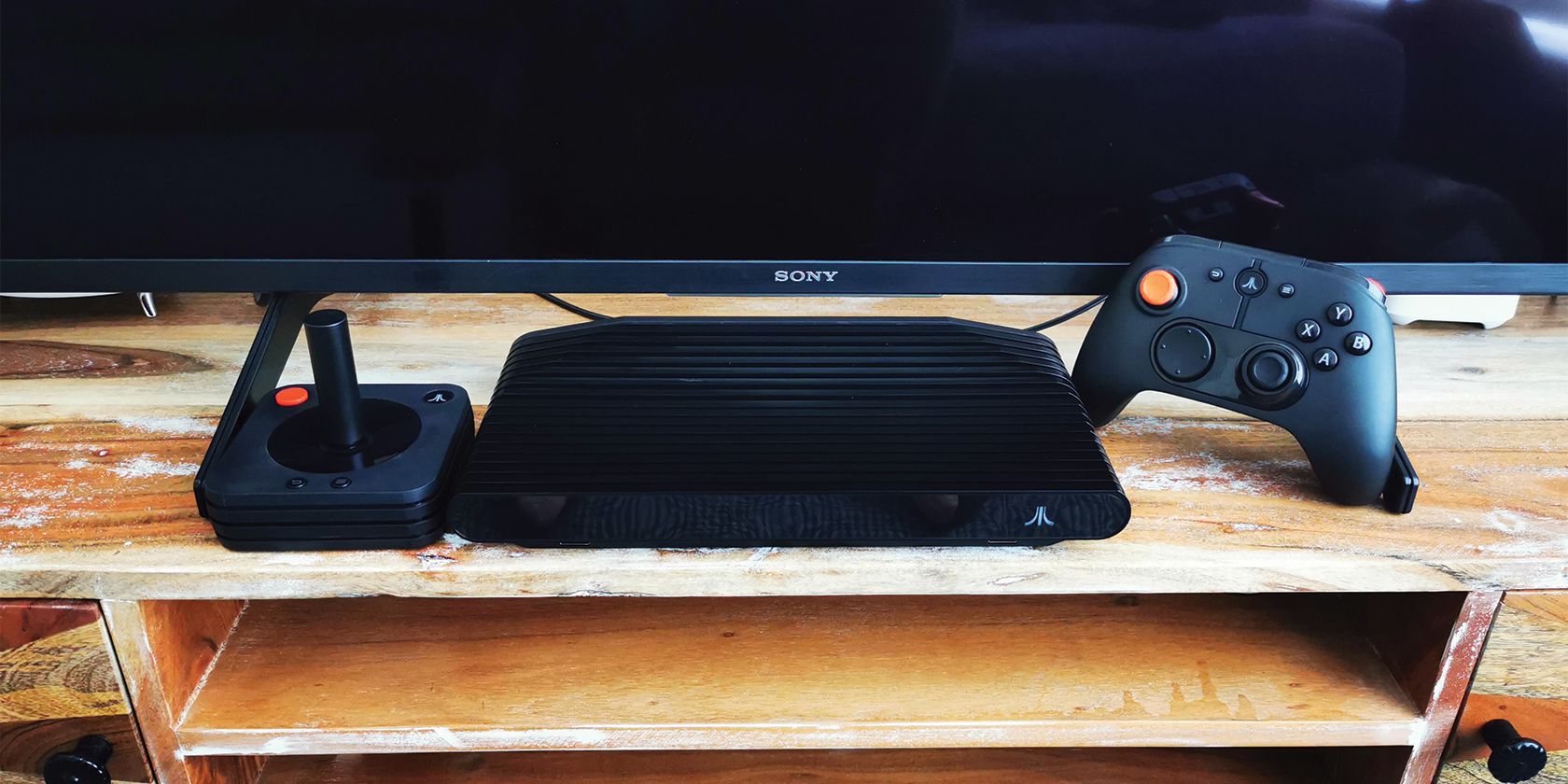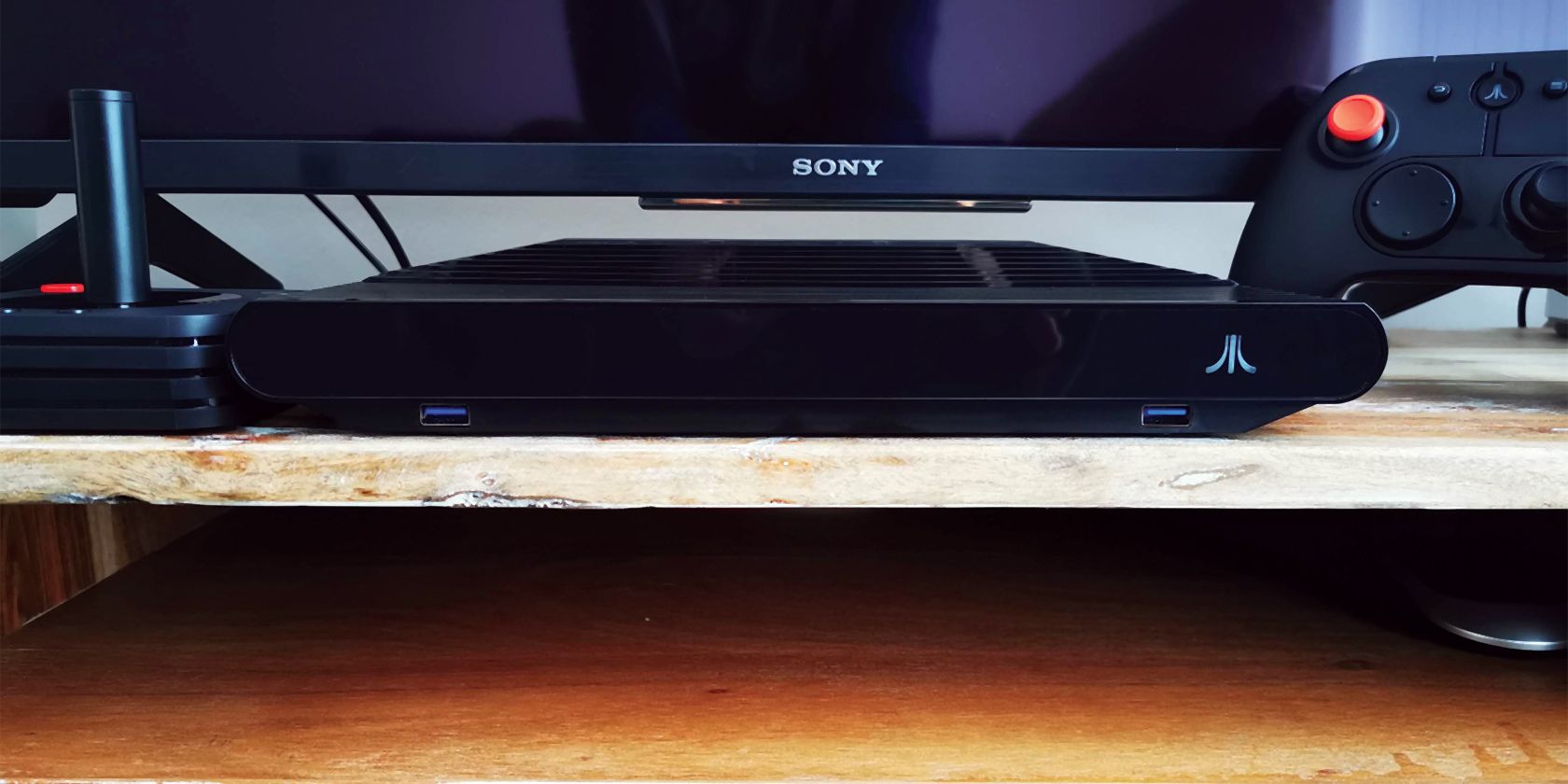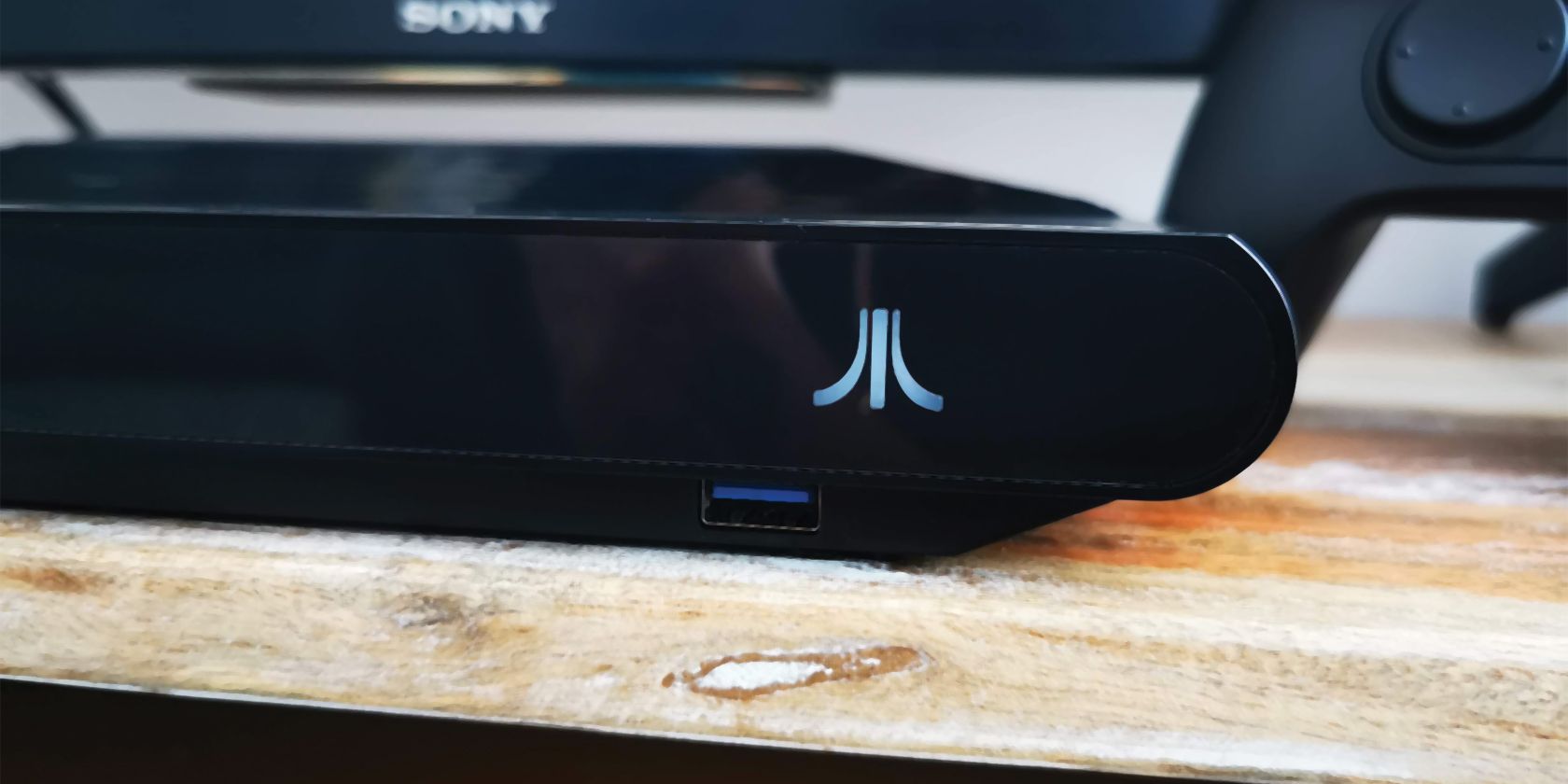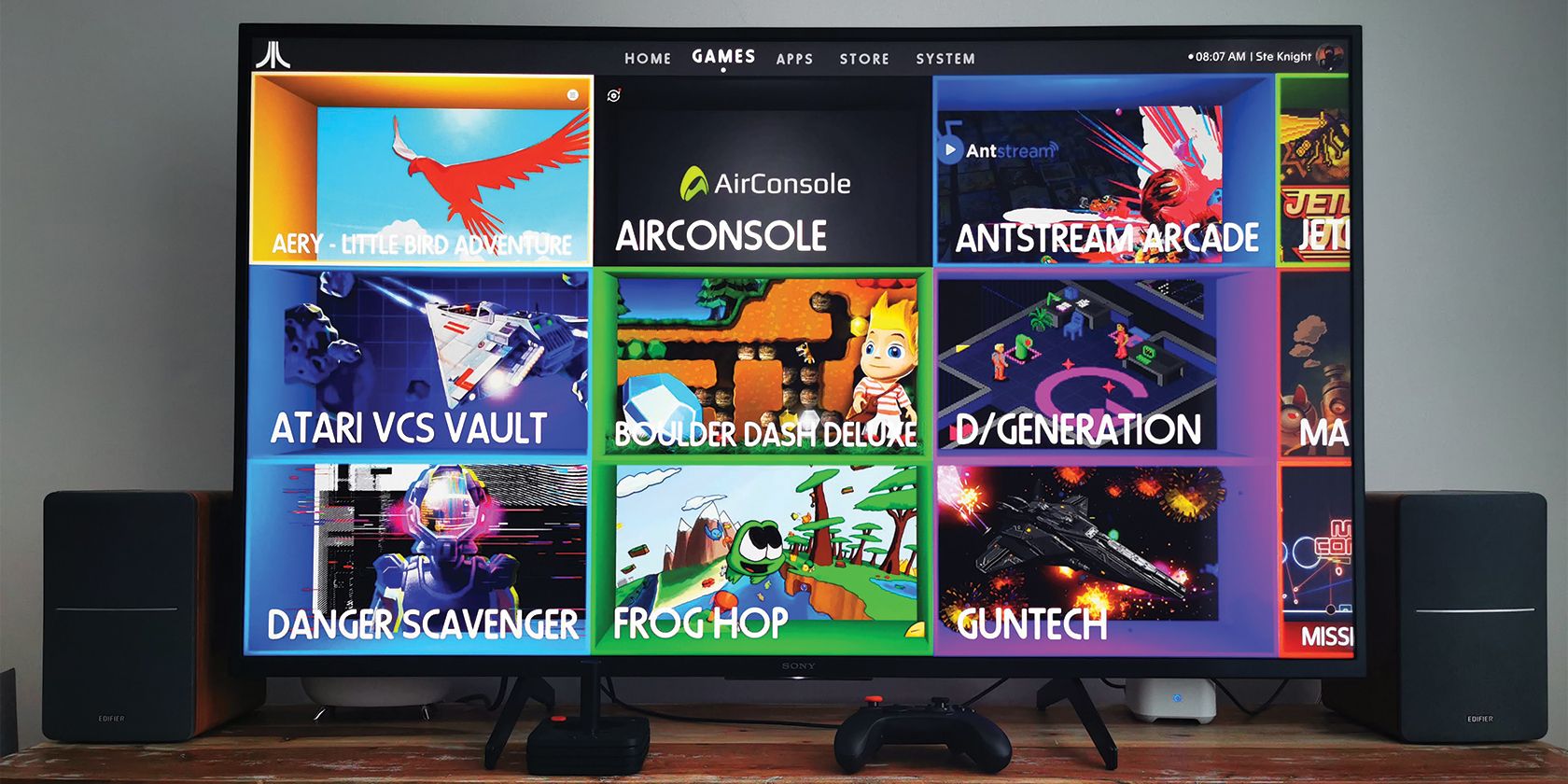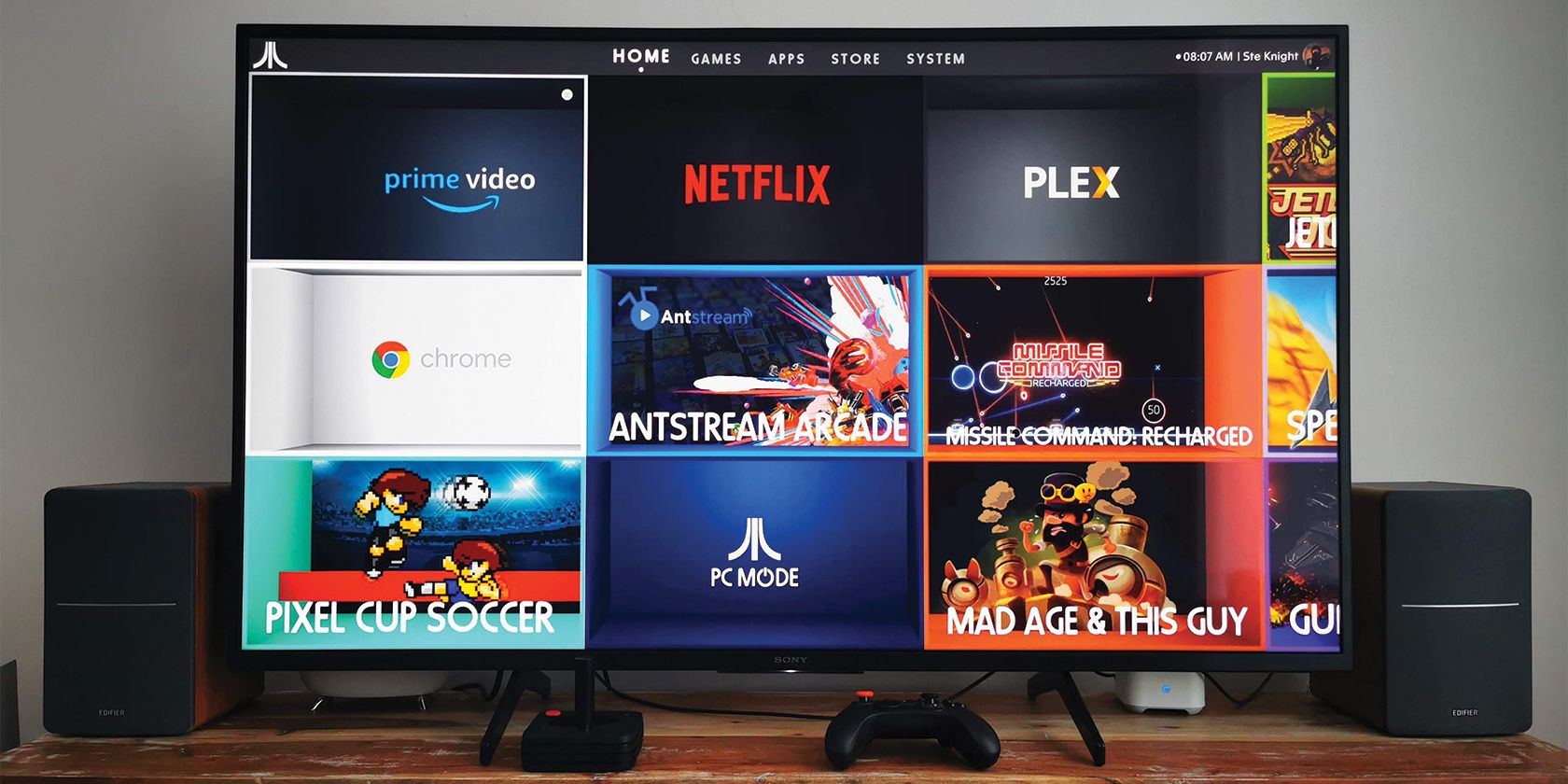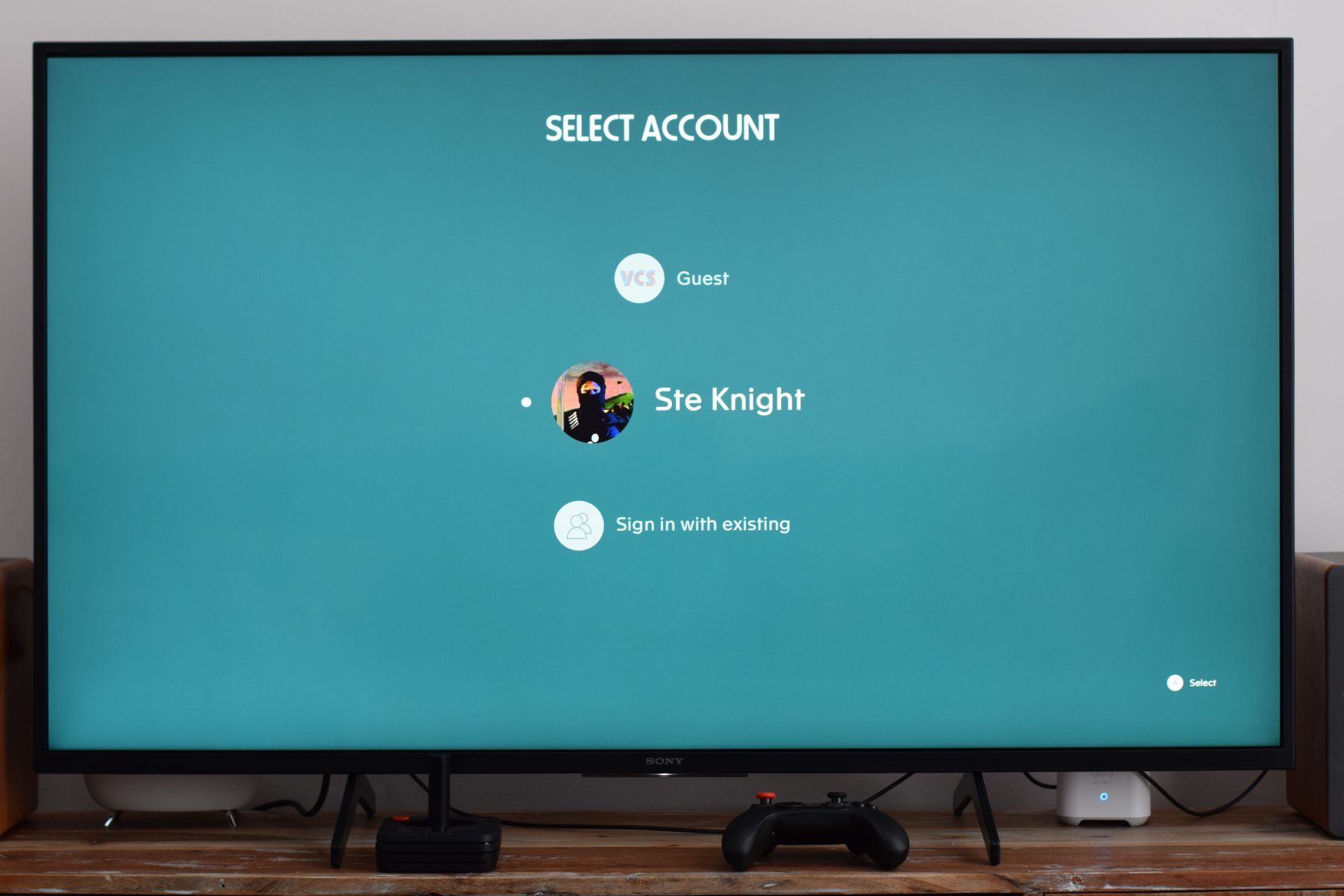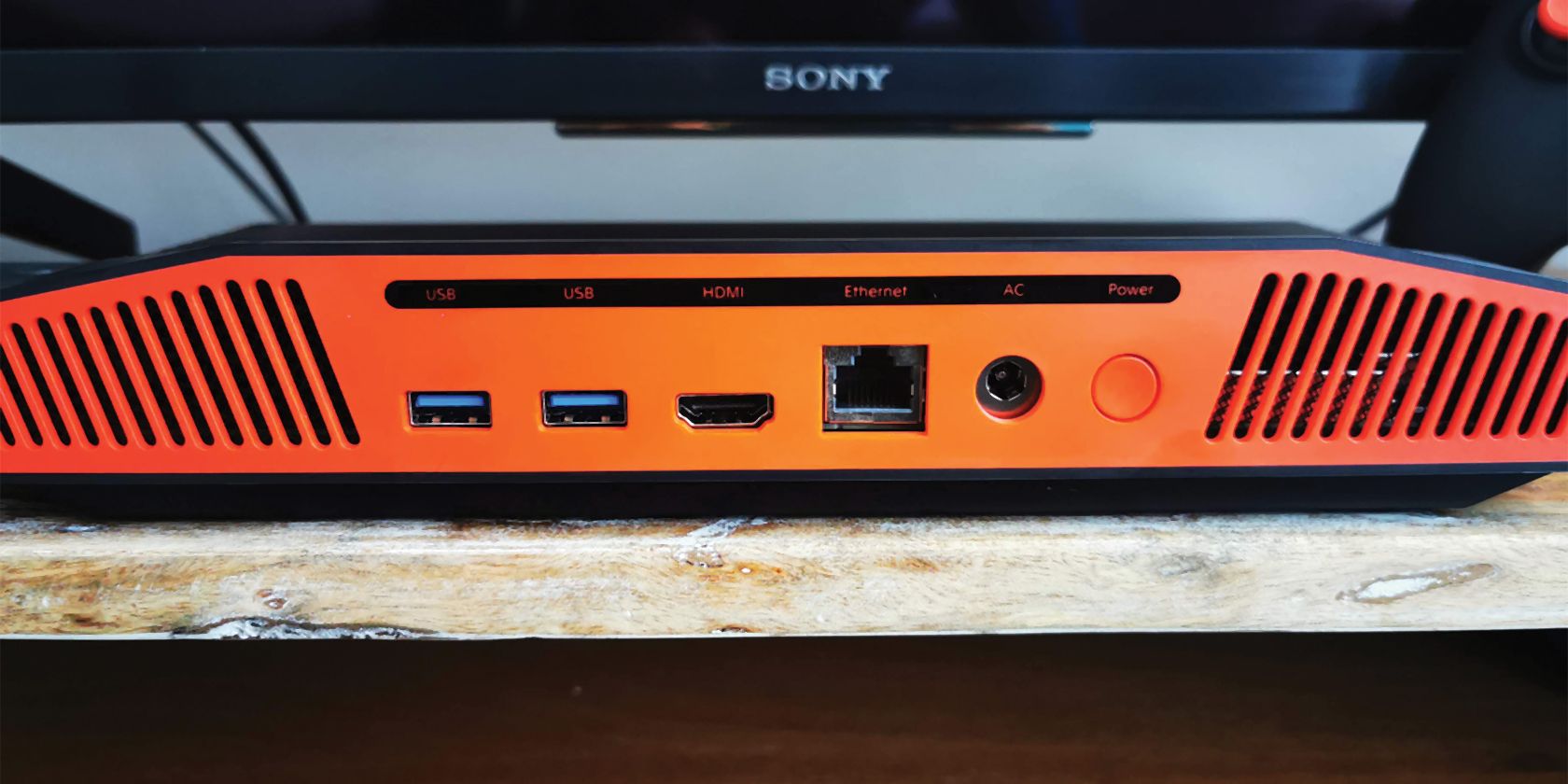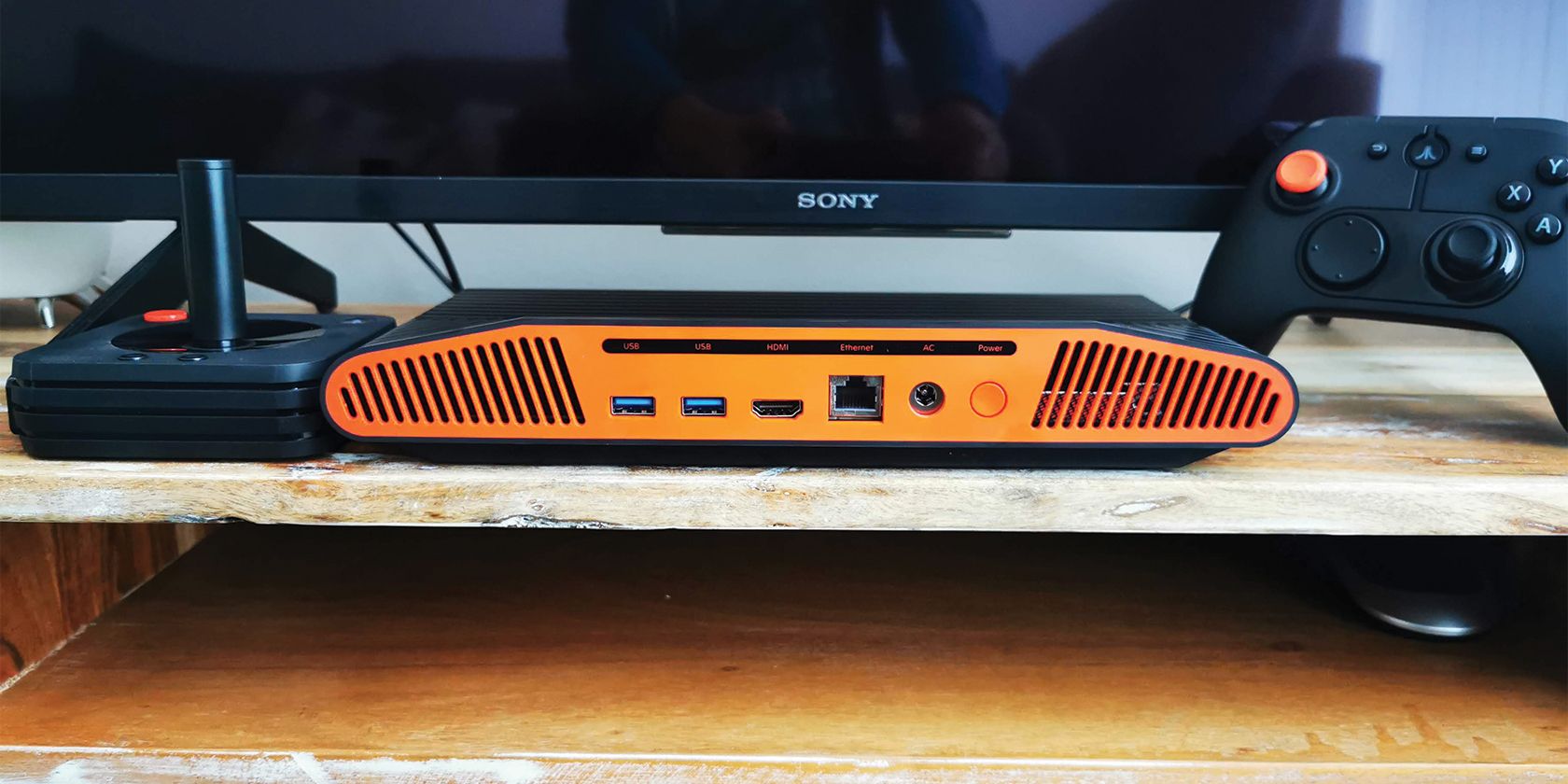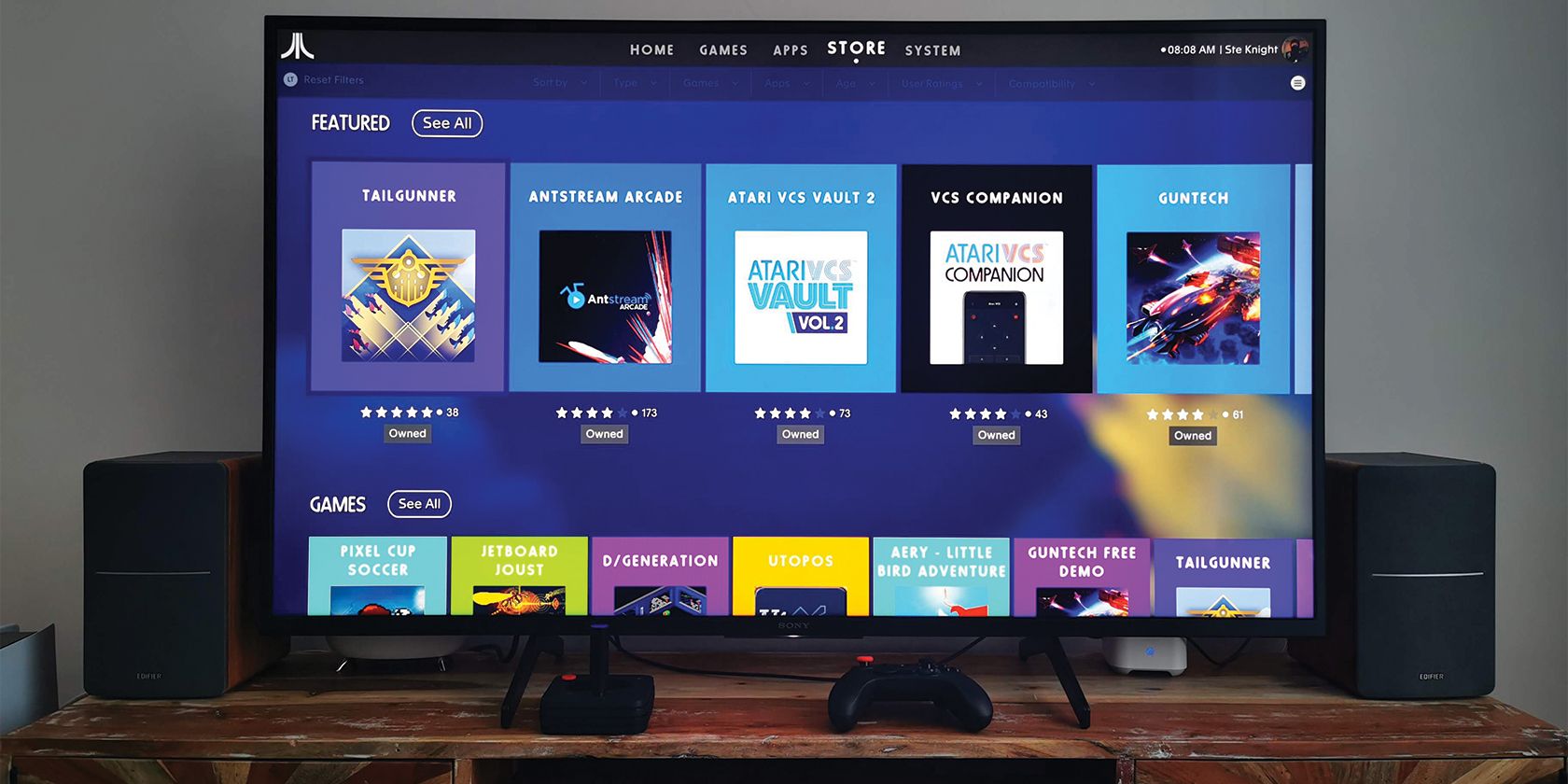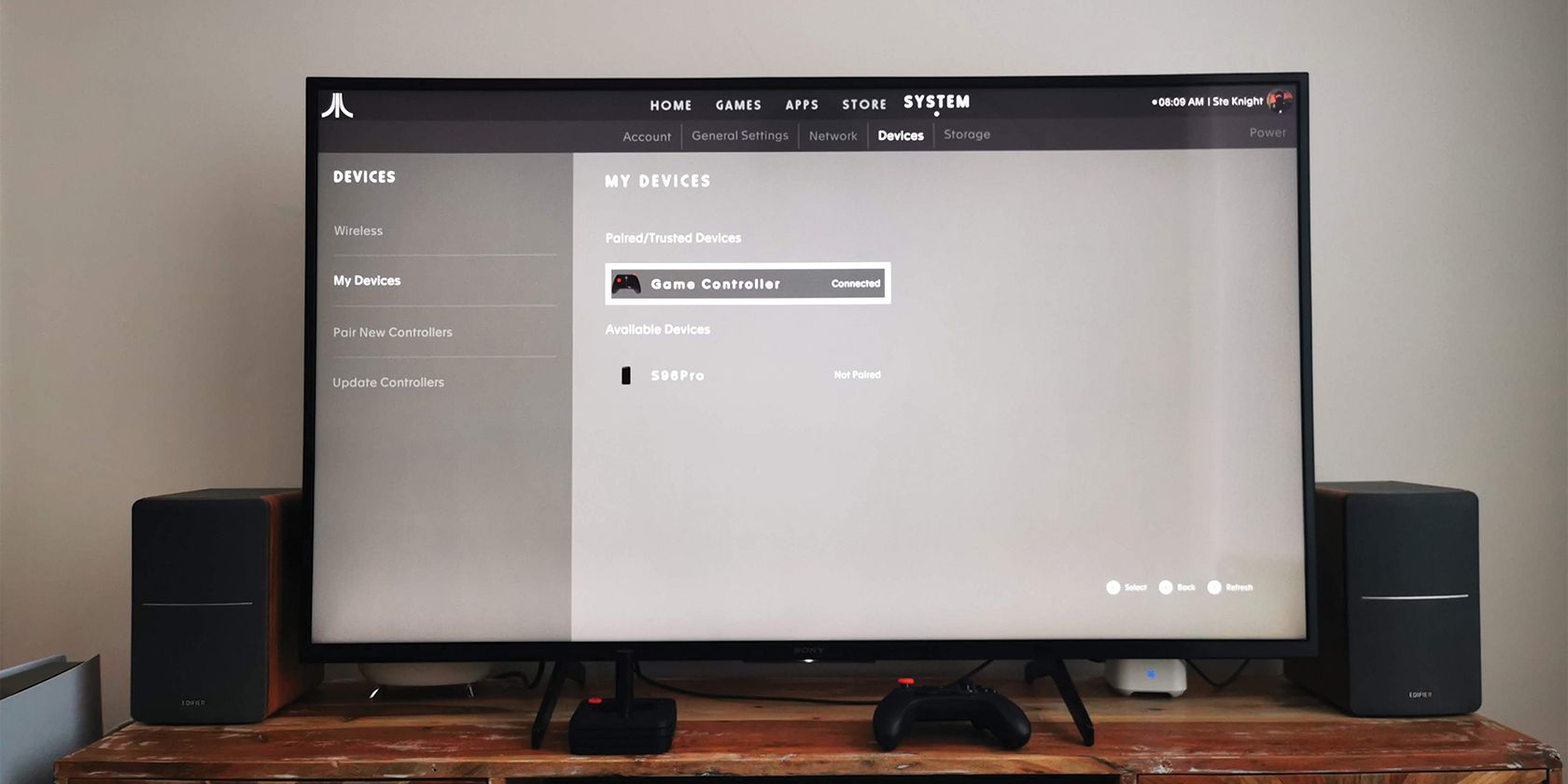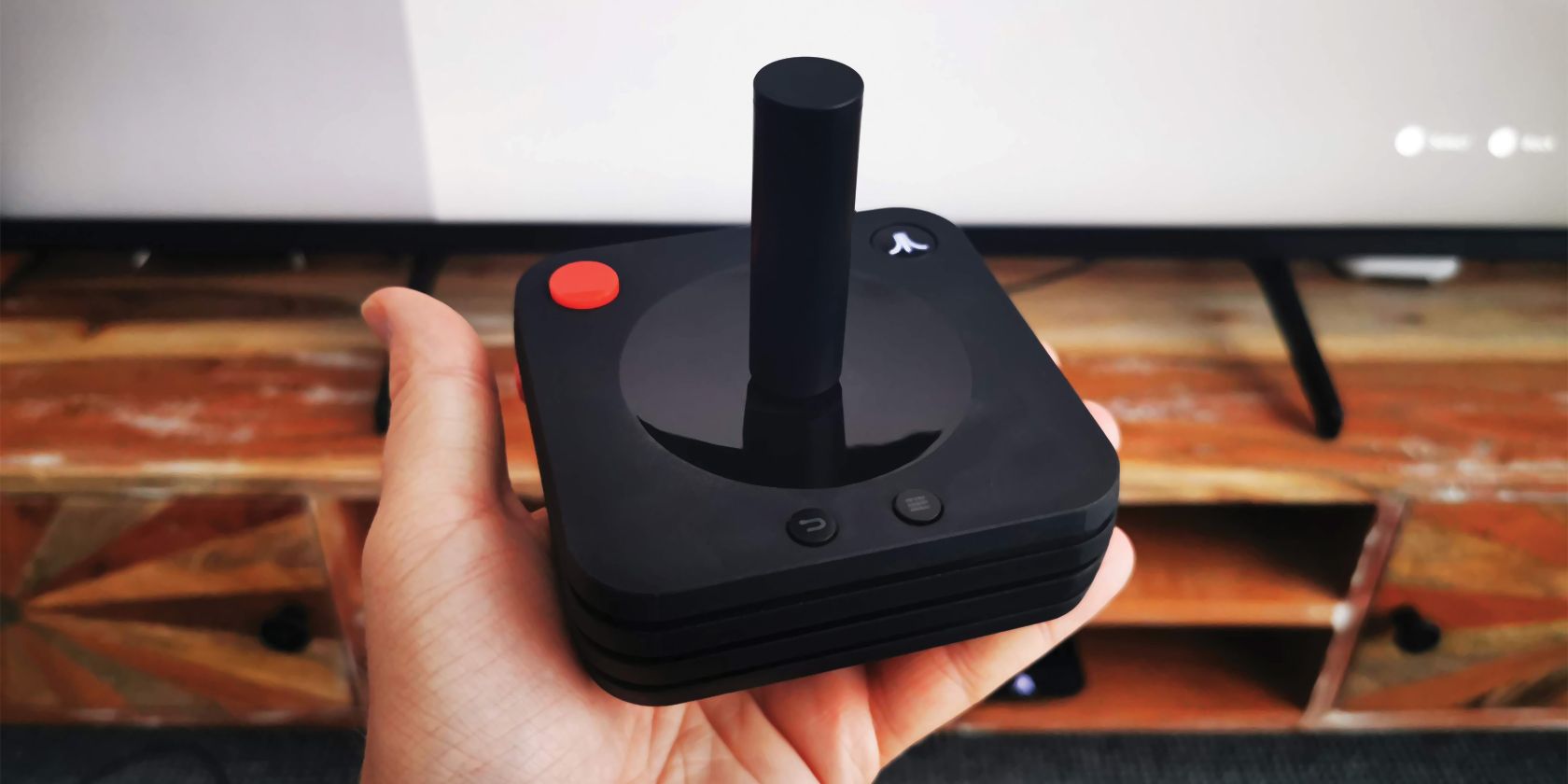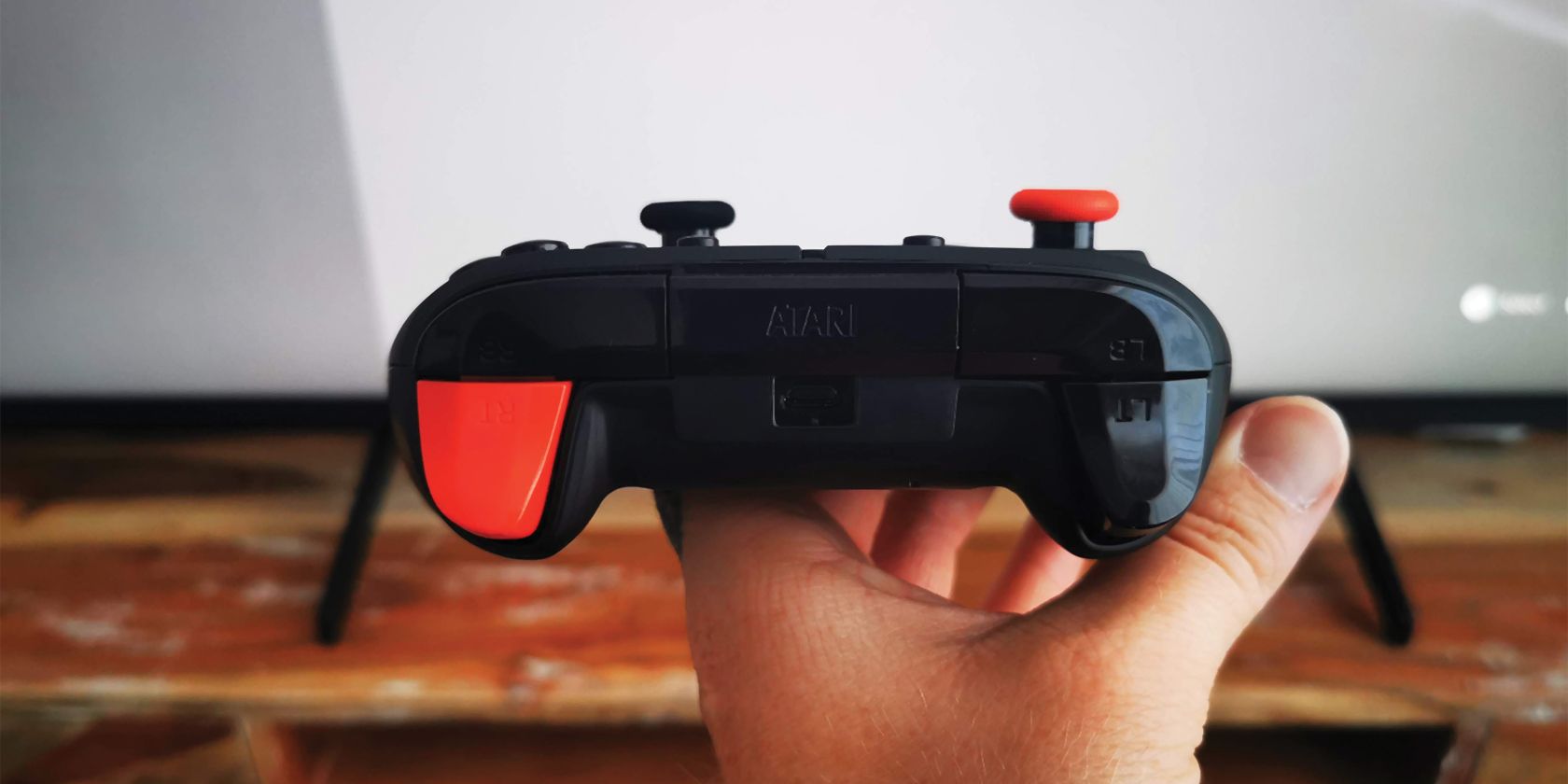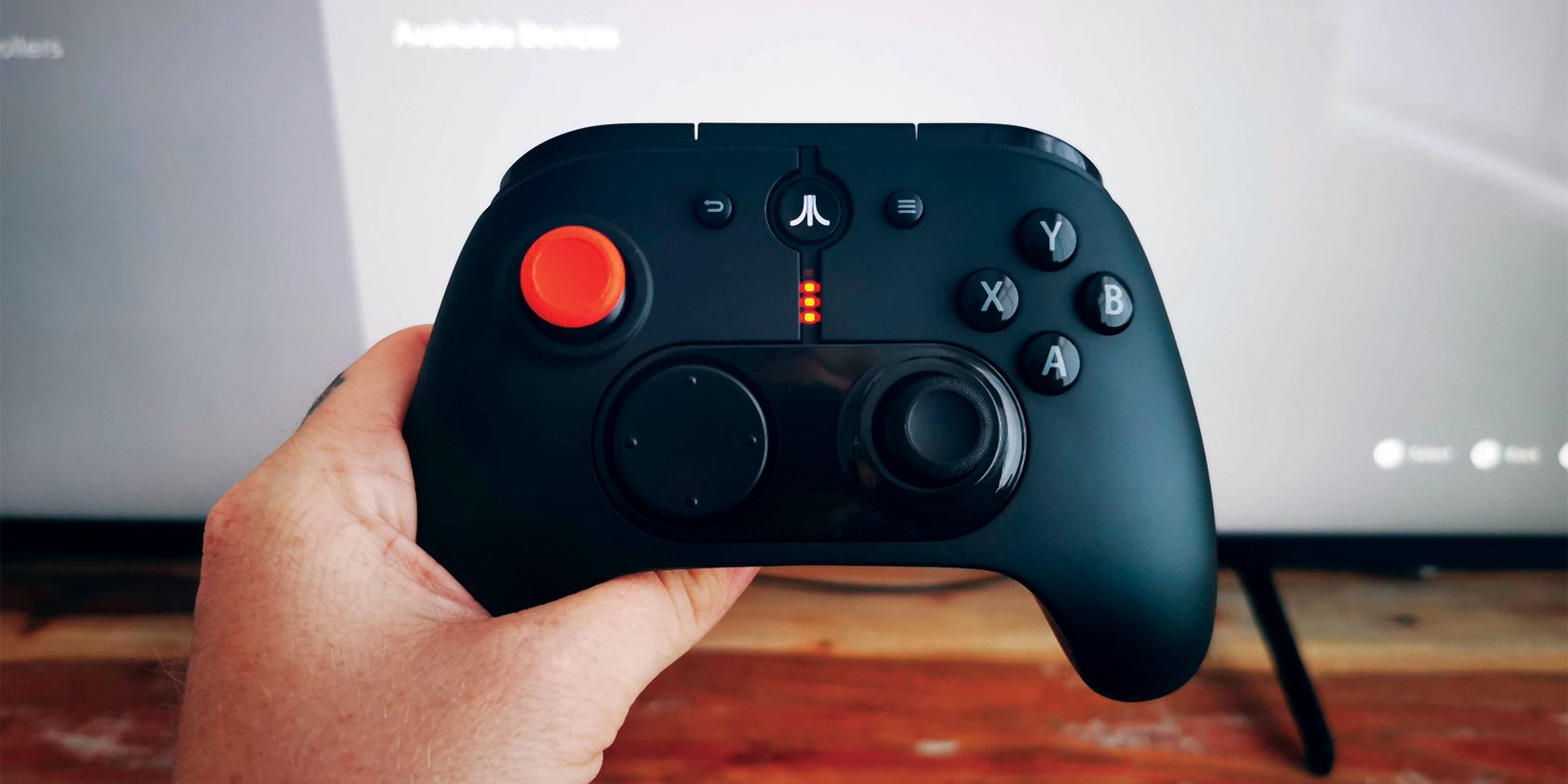Atari VCS
Atari bills the 2021 iteration of its VCS as a perfectly capable mini PC and a game console in one; a computer console hybrid. The launch games work well and there are some lovely indie titles in there, and you can stay productive with Chrome's browser-based apps. In all, despite a couple of expected teething problems, the Atari VCS is a great console capable of streaming media, running games, and with a selection of apps allowing users to make use of the computer console's features.
- Console computer hybrid
- Multiple controllers
- Up to 4K resolution
- Atari app store
- Gaming and productivity
- Operating System: Atari Custom Linux OS
- Storage: 32 GB flash (upgradeable M.2 SSD slot))
- VR Support: Not at present
- Resolution: Up to 4K
- App Store: Yes
- Wi-Fi: Wi-Fi 802.11 b/g/n 2.4/5GHz
- Ports: HDMI 2.0, Gigabit Ethernet, 4x USB 3.1
- HDR Support: No
- Nice selection of launch games
- Excellent for nostalgic gaming
- Can connect other Bluetooth devices
- Chrome browser works a charm
- Great for media playback
- PC Mode currently has issues
- Fan can be noisy
At last, the Atari VCS computer console has arrived. With four years in the making, you'd certainly expect the console to be more than just a heavy nostalgia trip. And it is, with one or two small caveats.
With so much hype leading up to its release (and somehow miraculously weathering the COVID storm despite electronic component shortages and logistics issues plaguing the tech industry), let's look at whether the Atari VCS lives up to expectation.
What's in the Box?
When you open the Atari VCS box, you'll find:
- The Atari VCS 800 computer console
- HDMI cable
- Power supply unit
And that is it. You don't actually get any controllers with the device as they need to be purchased separately. Each both the Atari Modern controller and the Classic Joystick come with a micro-USB charging cable in the box.
The console retails for $299.99, while both controllers retail at $59.99 each. You can also get a bundle, with the console and both controllers, for $399.99.
What About the Atari VCS Specs?
The Atari VCS comes with specs that, as Atari says, make it "a solid mini PC". We'll come to whether the specs do indeed make it so later, but for now, here's what we're looking at:
- Operating system: Atari Custom Linux OS (Debian based)
- APU: AMD Raven Ridge 2 (RG1606G)
- GPU: AMD Ryzen
- Storage: 32GB eMMC fixed internal; internal M.2 SSD slot; unlimited external USB HD/stick; cloud (subscription required)
- RAM: 8GB DDR4 RAM (upgradable)
- Compatible Operating Systems: Linux, Windows, Steam OS, Chrome OS
- Wireless Connections: Wi-Fi 802.11 b/g/n 2.4/5GHz, Bluetooth 4.0
- Wired Connections: HDMI 2.0, Gigabit Ethernet, 4x USB 3.1
- Mouse/Keyboard Support: Yes, USB or Bluetooth
- 4K video with HDCP 2.2 Integration: Supported
A Familiar Face
We'd forgive you for thinking you've seen the Atari VCS before. That is because Atari bases the console's appearance on the original Atari VCS, which later became the Atari 2600 in 1982.
Not familiar with the original VCS/2600? OK, let's take a tour around the device's aesthetics first.
We reviewed the Onyx version. This is all black (save for the back panel), with a ridged, contoured top surface that replicates the original device. Note that the faceplate is also black, although you can also get the Black Walnut version, which features a real wood faceplate, further mimicking the first iteration of the console.
To the front of the device we have the iconic Atari Fuji logo. This lights up with a white glow when the device in operation, and pulses with the same hue when you put the VCS into standby mode.
There are also two USB ports, which you can use to connect the controllers to charge, or to insert a USB drive if you need to use the device in PC Mode.
Spin the VCS round and the back comes in a recognizable Atari red. The back panel houses the power button, power input, an Ethernet port, and two further USB ports.
Anyway, now you know what the console looks like, lets see what the controllers have to say for themselves.
Atari VCS Controllers
As mentioned, you can get two controllers for the VCS. One is a modern joypad style controller, while the other is a very recognizable joystick. Both are wireless, but work with a wired connection too, should you wish.
The Wireless Modern Controller will have a familiar form-factor for anyone who plays Xbox, uses a Switch Pro control pad, or the official Stadia pad.
Crafted by PowerA, the joypad's buttons have the same configuration as those mentioned above in terms of the thumbstick, action buttons, triggers, and directional buttons/pad. The center houses a home button that features the Atari Fuji logo and lights up white. Below this is a strip of LEDs that indicate remaining battery power.
PowerA also designs the joystick controller. This looks pretty much identical to the joysticks that shipped with the 2600, save for a couple of extra buttons to add functionality, such as a home button and (curiously) a trigger button around the side of the device.
Personally, I find the stick component of the joystick to be a little flimsy. However, my memories of playing with a joystick (pre-1995) involve the Powerplay Cruiser.
Retro gamers will remember this stick. Not only because of its bright colors but also because of the adjustable torque control. This was a collar at the bottom of the stick, which made it harder or easier to manipulate the directional controls.
Because of this resistance, I guess my muscle memory expects the Atari wireless joystick to behave in the same way. A little more resistance would have been nice with the wireless joystick, personally, I find it isn't firm enough when I'm using it.
Saying that, it works perfectly for some of the retro games I have been playing from my younger days (more on those later).
Simple, User-Friendly Set-Up
The first thing you need to do, when you get any console, is set it up. This is a simple process. Just hook it up to a power source, connect to a display with the included HDMI cable, and you're ready to switch it on.
Doing so presents you with a lovely Asteroids animation, which then takes you to the sign-in page. At this stage, you'll need to connect the controller to the console, or you won't be able to input any details for account set-up. This is simply a case of holding down the home button, which puts the controller into pairing mode and connects it to the console.
Setting up your account is as easy as defining your user name and selecting a password.
Given that I received the Atari VCS prior to general release (in order to test it), for the first time in my life, I could choose Ste Knight as my user name and wasn't greeted by a "This username is unavailable" message. Sorry, SteKnight_1.
Note that you can set up different user accounts on the VCS, which is great if you want to have an account for the grown-ups and a separate one for the kids.
With the Atari VCS running and the account set up, now it is time to check out the VCS software.
An Easy to Navigate User Interface
The first thing that struck me about the Atari VCS was its simple user interface (UI). This comprises several pages; Home, Games, Apps, Store, and System.
When you first see it, the Home page will be fairly unpopulated, save for Google Chrome and the Atari VCS Companion launcher. As you use the apps and games you add to the device, the home page will populate, with your most recently used app appearing first in the list.
The Games page will also be unpopulated. This (obviously) fills up with titles as you add them from the Store. As you do, it presents each game in its own box, and you just select it to launch the game, as with any other console carrying digital titles.
In the Store, you'll find Featured Apps and Games, plus a section for all Games and all Apps. Selecting one will present you with a description of the game, with screenshots, and the option to buy it (along with the price).
System is where you deal with the Atari VCS settings. You'll find the following options in here:
- Account: Here you can alter account settings and remove an account.
- General Settings: Here you can change display settings, change your console preferences such as Sleep time, find out how the controller operates, perform System and BIOS updates, and factory reset the VCS.
- Network: This is where you connect to the internet, wirelessly or via ethernet cable.
- Devices: Toggling Bluetooth, checking out your connected devices, and adding new controllers. You also update your controller firmware here.
- Storage: You can manage internal storage and connected storage media here.
At the top right of the screen, you'll see your avatar. Navigating to this will allow you to switch accounts and turn the console off.
With menus out of the way, let's get to the meat on the Atari VCS' bones.
Gaming on the Atari VCS
Being a nostalgia freak, I absolutely love any gaming system that lets me play games I loved growing up, like the Evercade handheld games console. With this in mind, the Atari VCS provides an excellent platform for me to get all misty-eyed over.
Including Antstream Arcade on the store is a real boon for Atari and for its retro game loving fans. I've been hammering the likes of Sensible World of Soccer, GODS, and Chaos Engine, along with many other titles from my youth. The VCS copes well with these games (as you would expect; it is significantly more advanced than the original game platforms).
The Atari VCS Store currently features a modest selection of games. These are indie titles, and you'll recognize some of them from other platforms, like Sir Lovelot, Something Ate My Alien, and Jetboard Joust.
One exciting title (currently in public beta on the VCS and Steam) is a remake of 1993 shooter Utopos. This is an arena-based game, in which contestants fly space ships around an enclosed zone, blasting each other deathmatch style. Oh yeah, and no spawn camping in this one. Brill! As it is in beta, though, you're likely to only play against AI for now.
Atari promised the VCS would create a platform for indie developers to shine, and it has so far. It just needs to grow the collection of titles available in the store. But, hey, the PS5 had few titles at launch and it still relies heavily on indie titles, so who are we to talk?
Most of these games run smoothly on the VCS. The only exception is Missile Command Recharged, which seems to hate the Wireless Classic Joystick. This doesn't work at all with the game, seemingly taking on a mind of its own and dragging the cross-hair to the bottom left of the screen, so you can't defend your base. It is pretty hard to play with the Modern Controller.
Hopefully, as the Atari VCS grows in popularity, the game store will expand to feature some bigger titles alongside its loveable indie games.
Productivity on the Atari VCS
In terms of productivity, I must start with a caveat. I couldn't test the PC Mode, as the VCS wouldn't boot the UbuntuOS drive I had created on external storage. I reached out to Atari for help with this matter, and I'm told that it will resolve the issue in the next software update. Fingers crossed because I would actually like to use the VCS as a living room PC, as Atari marketed the device.
You should also note that PC Mode also currently only works with a signed OS (when it works). So platforms like ChromeOS, Windows, and Ubuntu. I tried to boot Chromium, but this isn't a signed OS, so the VCS displayed a security warning and refused to launch it, sadly.
However, if you're having a similar issue, you do have Google Chrome pre-installed on the VCS. So you can still make use of Google's suite of browser-based applications such as Docs, Sheets, and so on. Therefore, if you need to get productive with your VCS, you still can, just not with PC Mode at the time of writing.
Browsing the web on my Sony Bravia TV, via the VCS was a pleasant experience (MUO looked particularly resplendent). I have connected a wireless keyboard and mouse to the device, which makes using it for productivity even easier.
Note that you can download an app for your smartphone or tablet called the Atari VCS Companion. This acts as a wireless keyboard and mouse, so you don't actually need any extra peripherals if you're in a pinch and need to browse the internet on your VCS. It works very well with the console and I noticed very little latency between executing a command and the VCS performing it.
TV, Movies, and Music on the Atari VCS
You can access a range of SVOD services on the Atari VCS. This includes the current "big three"; Disney+, Netflix, and Amazon Prime Video. You can also access further services (sadly geo-locked to the US, sorry non-US readers), including Showtime, ESPN, and Peacock, among others.
I installed Netflix and found no issue with playback, even with UHD movies and TV series'. Likewise, Amazon Prime Video works as it does on my PS5 or my Fire TV stick. So, all is well in this respect. I noticed no lagging or juddering, no buffering, and it perfectly syncs audio with video.
I also installed Plex, meaning I can access all of my owned media directly from my server upstairs and play it via the VCS (although I don't really need to, as I also have Plex on about a million other devices). However, it handles Plex really well, streaming my music collection faultlessly.
So, as with games, we're all good regarding media playback.
Should You Buy the Atari VCS?
That all depends on what you want from it. If you want it so that you have a central hub to play retro and indie titles, then that is one box ticked. If you would like to use it for streaming media and accessing your owned media, there is another box ticked.
The only area that I felt a little let down on was the PC Mode. Productivity is still achievable, and don't forget, almost every device you buy now requires updates and so on as developers address bugs. The Atari VCS is no different in this respect. Hopefully, Atari will resolve the PC Mode issues with the next update.
Some might sneer at the price and compare it to the PS5 or the Xbox Series X. However, how much work can you do on those? None. Atari doesn't want to draw comparisons between the VCS and new-gen consoles, and for good reason, they're totally different things.
Once Atari sorts the above-mentioned teething issues out, I am confident that I for one will use the device not just to play myriad games, but also to write my reviews here on MUO while I'm relaxing on my sumptuous sofa, and that can't be a bad thing at all.

